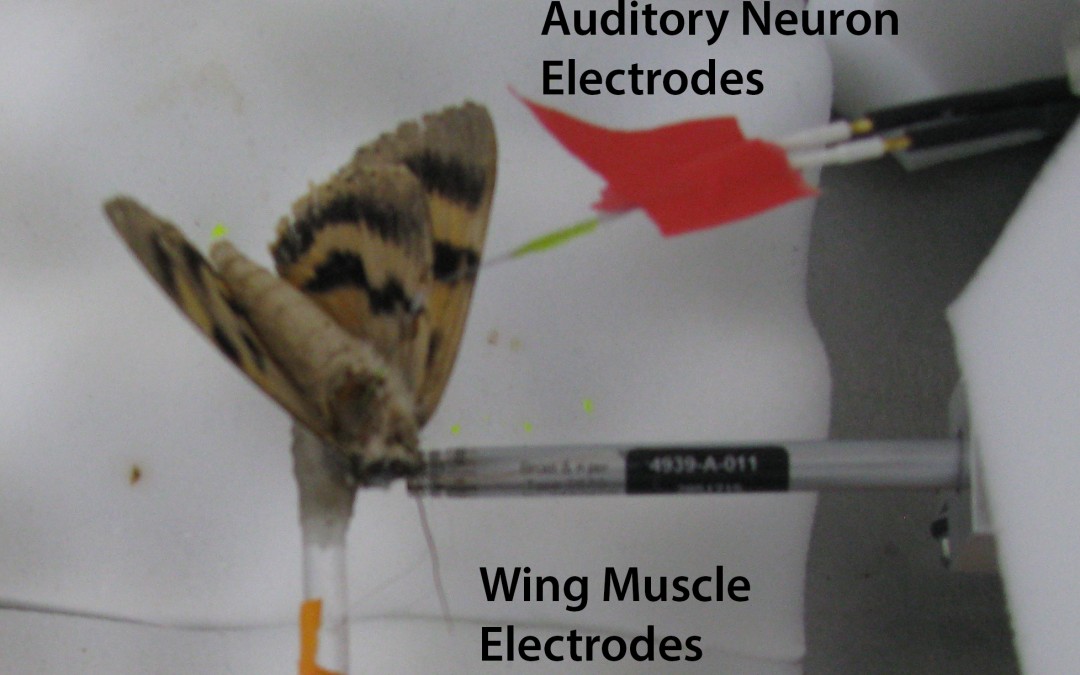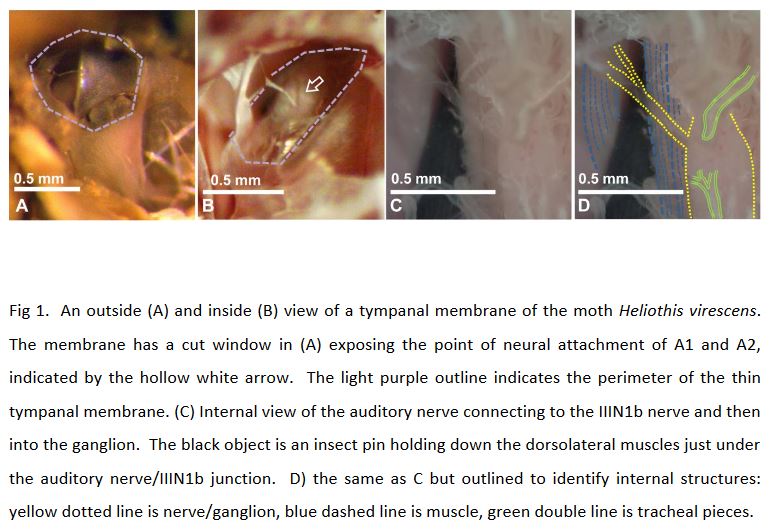
by Shira | Feb 2, 2018
Abstract: Animals co-occur with multiple predators, making sensory systems that can encode information about diverse predators advantageous. Moths in the families Noctuidae and Erebidae have ears with two auditory receptor cells (A1 and A2) used to detect the...

by Shira | Mar 21, 2017
The ear of the noctuid moth has only two auditory neurons, A1 and A2, which function in detecting predatory bats. However, the noctuid’s ears are located on the thorax behind the wings. Therefore, since these moths need to hear during flight, it was hypothesized...





Recent Comments